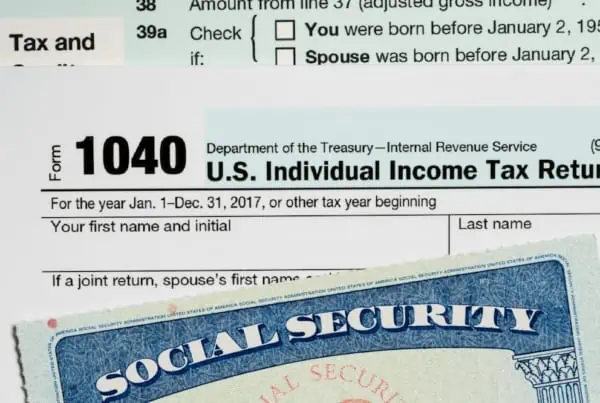Many of the most impactful tax provisions in the “One Big Beautiful Bill” (OBBB), which President Trump signed into law on July 4, made expiring changes from the Tax Cuts and Jobs Act (TCJA) of 2017 permanent.
However, the new legislation also includes some brand-new tax deductions that will help millions of Americans cut their federal income tax bill. In most cases, tax savings will be available right away, too (i.e., starting with the 2025 tax year). But most of them are only temporary, so you won’t be able to take advantage of them for very long unless they’re extended down the road.
Here’s a quick rundown of five new tax deductions in the One Big Beautiful Bill. Take a look to see if you can claim any of them. If so, you might be able to save hundreds—or even thousands—of dollars when you file your next tax return.
New Deductions From the OBBB

Many of the Tax Cuts and Jobs Act’s provisions were set to expire after the 2025 tax year. However, the Republicans’ budget reconciliation bill, dubbed the One Big Beautiful Bill, extended (and even enhanced) several of these provisions, including the TCJA’s lower tax rates, higher standard deduction, and increased child tax credit.
However, the OBBB didn’t just tie up loose ends. It also introduced some tax law changes—some permanent, but some that, as written, will only last a few years.
The following are five of the most consequential new tax deductions created by the OBBB.
1. ‘No Tax on Tips’

The OBBB creates a new deduction for up to $25,000 in cash tips you receive during the year.
However, if your income is too high, you won’t qualify for the full amount. The $25,000 maximum is gradually reduced if your modified adjusted gross income (MAGI) exceeds $150,000 ($300,000 if you’re married and filing a joint return). The deduction is completely phased out if your MAGI is at least $400,000 ($550,000 for joint filers).
Young and the Invested Tip: For all the new tax breaks with income limits, MAGI is equal to the adjusted gross income reported on your tax return, plus any (1) foreign earned income or housing costs exempt from tax, and (2) income exempt from tax for residents of Guam, American Samoa, the Northern Mariana Islands, or Puerto Rico.
You can only deduct tips received “in an occupation which customarily and regularly received tips” before 2025. The IRS will release a list of jobs that satisfy this requirement by Oct. 2, 2025—but expect the list to include waiters, bartenders, hairstylists, Uber drivers, housekeepers, and the like.
You can claim the deduction whether you itemize or take the standard deduction. But you must have a Social Security number and include it on your tax return. If you’re married, you can’t claim the deduction if you and your spouse file separate returns (in other words, you must file a joint return).
The tip deduction is temporary. It only applies to the 2025 to 2028 tax years.
Related: New SALT Deduction Cap: How It Works and Who It Helps
2. ‘No Tax on Overtime’

The OBBB also provides a limited deduction for overtime pay.
The deduction is capped at $12,500 ($25,000 for joint filers). However, the maximum amount is gradually reduced if your MAGI exceeds $150,000 ($300,000 in the case of a joint return). The deduction is reduced to $0 once your MAGI hits $275,000 ($550,000 for joint filers).
As with the deduction for tips, the overtime deduction is allowed regardless of whether you claim the standard deduction or itemize. Married couples also have to file a joint return in order to claim the deduction. Plus, you must have a Social Security number—and include it on your tax return—if you want to deduct overtime pay (ditto for a spouse claiming the deduction).
The overtime deduction is temporary, too. It only applies for the 2025 to 2028 tax years.
Related: When and How to Adjust Your Tax Withholding
3. Senior Deduction

A new tax deduction for seniors is available for the 2025 to 2028 tax years. Anyone who is at least 65 years old by the end of the tax year is eligible for the deduction.
If you’re married, you must file a joint return to claim the deduction—but your spouse can claim it, too, if they’re 65 or older. Again, you can claim the deduction whether you itemize or take the standard deduction. However, you must have a Social Security number and provide it on your tax return (so does a spouse who’s claiming the deduction on a joint return).
The deduction amount is a maximum of $6,000 per eligible senior. So, for example, if you’re married and your spouse is at least 65, you can claim a combined deduction of up to $12,000 on a joint return. However, the $6,000 deduction for each person is gradually phased out when your MAGI surpasses $75,000 ($150,000 for joint filers). It’s whittled down to $0 when your MAGI exceeds $175,000 ($250,000 for joint filers).
Related: 11 Ways to Avoid Taxes on Social Security Benefits
4. Car Loan Interest Deduction

The OBBB authorizes a deduction of up to $10,000 for interest paid on loans for the purchase of a new car, van, minivan, SUV, pickup truck, or motorcycle.
But the car loan interest deduction comes with several important restrictions.
For instance, the deduction is only available if you buy a vehicle after 2024. Final assembly of the vehicle must take place in the U.S., too. And the deduction doesn’t apply if you lease a vehicle, or for interest on loans to buy either:
- Commercial vehicles that aren’t used for personal purposes
- Fleet vehicles
- Vehicles with a salvage title
- Vehicles intended to be used for scrap or parts
If your MAGI exceeds $100,000 ($200,000 for married couples filing a joint return), the deduction begins to phase out at a rate of $200 for every $1,000 you make over the MAGI limit. It’s completely eliminated once your MAGI reaches $150,000 ($250,000 for joint filers).
The deduction is available whether you itemize or claim the standard deduction. But it’s only available for the 2025 to 2028 tax years.
Do you want to get serious about saving and planning for retirement? Sign up for Retire With Riley, Young and the Invested’s free retirement planning newsletter.
5. Charitable Deduction for Non-Itemizers

Under current law, you can only deduct charitable donations if you itemize. If you take the standard deduction instead, you can’t deduct any contributions to charity.
But if you recall, people who didn’t itemize could still deduct up to $300 in charitable donations for the 2020 and 2021 tax years (joint filers could deduct up to $600 for 2021). This deduction was one of many COVID-era tax law changes that were only temporary.
Here’s the good news: The OBBB is bringing the deduction back—so it’s technically not a “new” deduction—and making it better.
Starting with the 2026 tax year, non-itemizers can deduct up to $1,000 of qualified charitable contributions (up to $2,000 on a joint return). However, only cash contributions are deductible, and your contributions must be made to a religious, charitable, educational, scientific, or literary organization.
You also can’t deduct donations to a private foundation, contributions to a donor-advised fund, or charitable contributions carried forward from a previous tax year.
This deduction is permanent. So, unlike the other new deductions described earlier, it doesn’t expire after a few years.
- “Can I retire yet?” Stop guessing. Start planning.
- Subscribe to Retire With Riley: a FREE weekly retirement planning newsletter.
- Riley Adams, CPA, is a financial advisor who can help you turn retirement dreams into reality.
- Written by Riley Adams, CPA, a fiduciary financial advisor
- Edited by Kyle Woodley, Editor-in-Chief of YATI Media, LLC, former Senior Investing Editor, Kiplinger.com and Managing Editor, InvestorPlace
- Free retirement planning information
- Covers a broad range of topics with expert insights, data, and details
- Weekly, digestible email written in accessible language
Copyright © 2025 by Rocky Mengle. All rights reserved. Used with permission.









